We visited a loppis back in the Summer and I bought what appeared to be a coupon collection. I’m a collector of interesting printed things, I liked the style and the seller only wanted 40SEK for it, so I couldn’t leave it behind. The loppis was a bit chaotic and it wasn’t until I took a closer look afterwards, that I realised I was holding a Swedish ration book from WW2. Without doubt, my best loppis find to date!
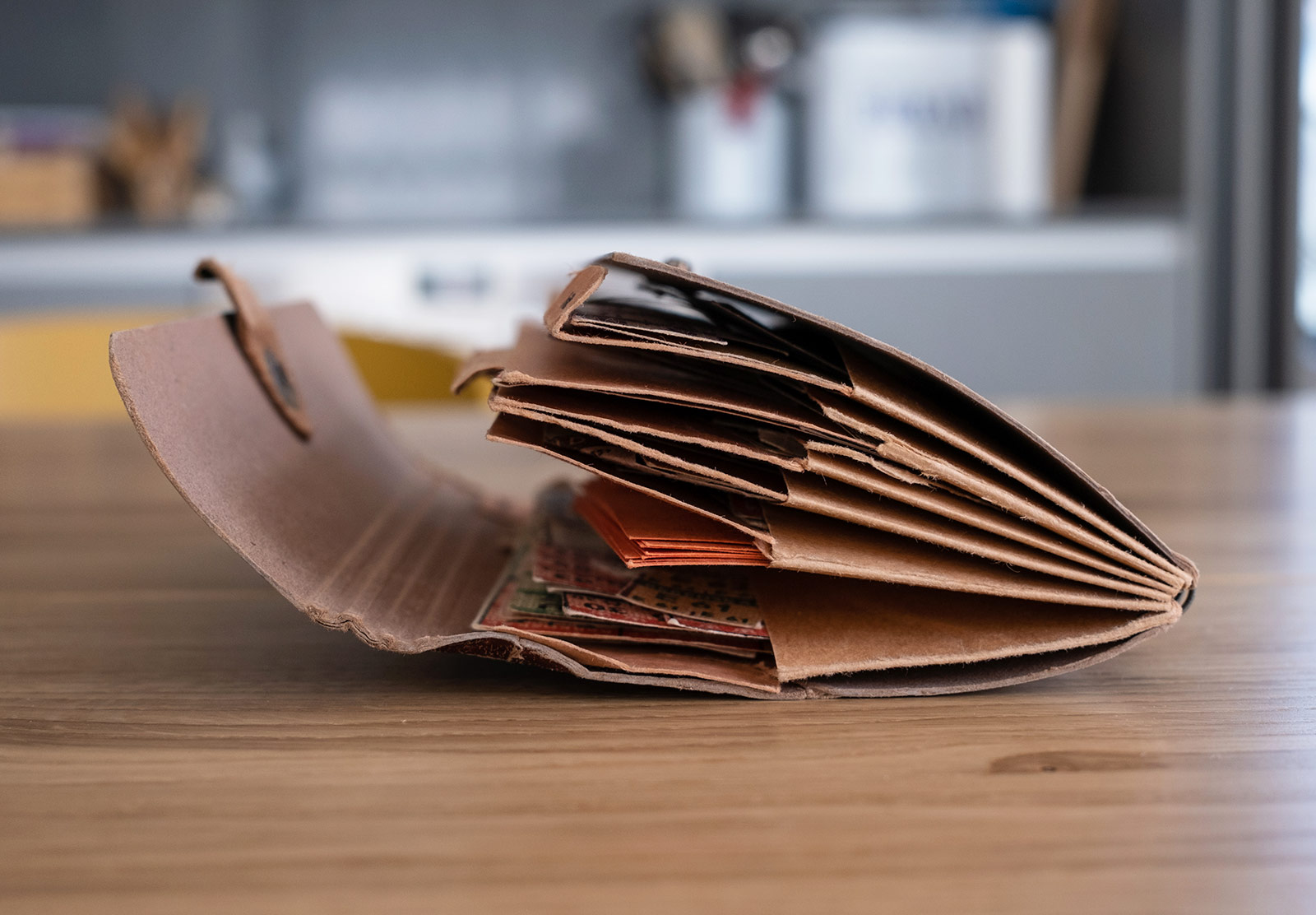
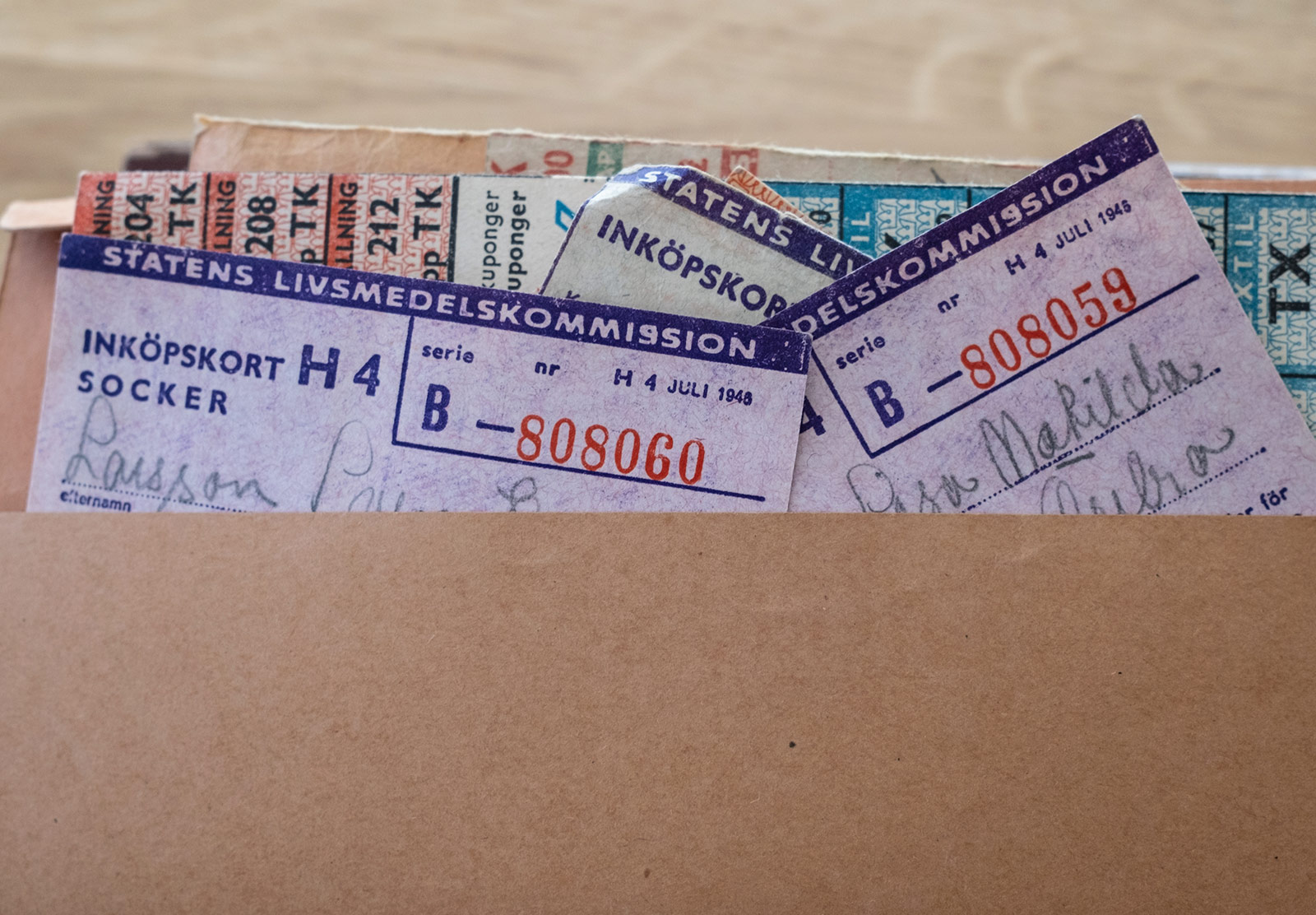
This ended up morphing into a hefty research project so I decided to document my findings. I often wonder if these projects could end up being the only digital record of someone and that makes sharing them feel worthwhile.
The ration cards and coupons
The cardboard ration book is filled with dividers for various goods including sugar, meat, shortening, bread, flour, coffee, clothes, laundry and miscellaneous. Ransoneringskort (ration cards) is embossed on the outside but I didn’t see that when I first picked it up.

Each of the ration cards cover specific items including pork, meat, cleaning products, tobacco, rye, flour, sugar, bread, shoes, textiles, shortening (5g portions), coffee, tea, cocoa, washing soda and eggs. The bread coupon could also be used for pepparkakor… so at least people had something for their fika! Although coffee was rationed all the way through to 1951, which means it was probably a while before the Swedes could enjoy fika without limits.


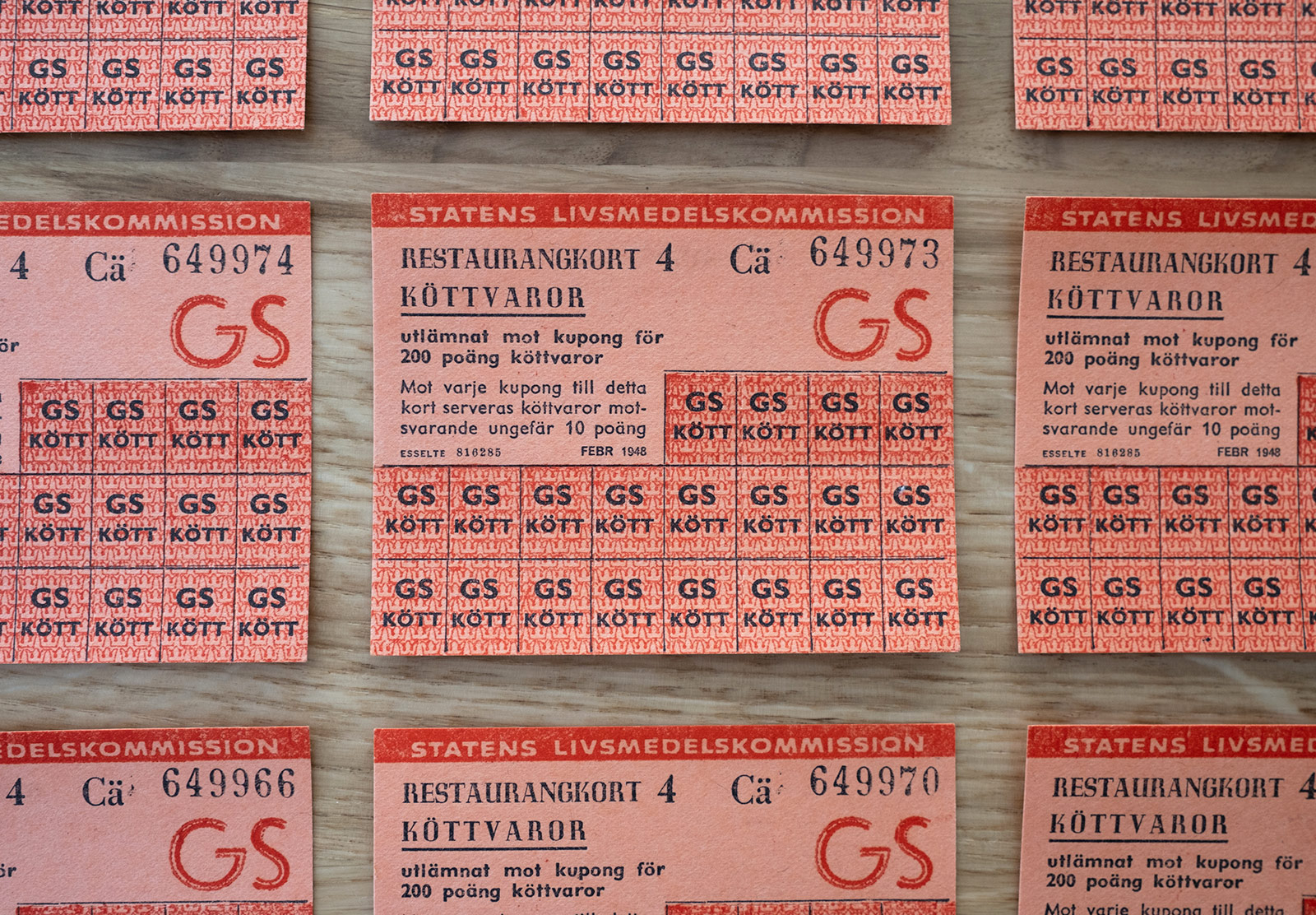
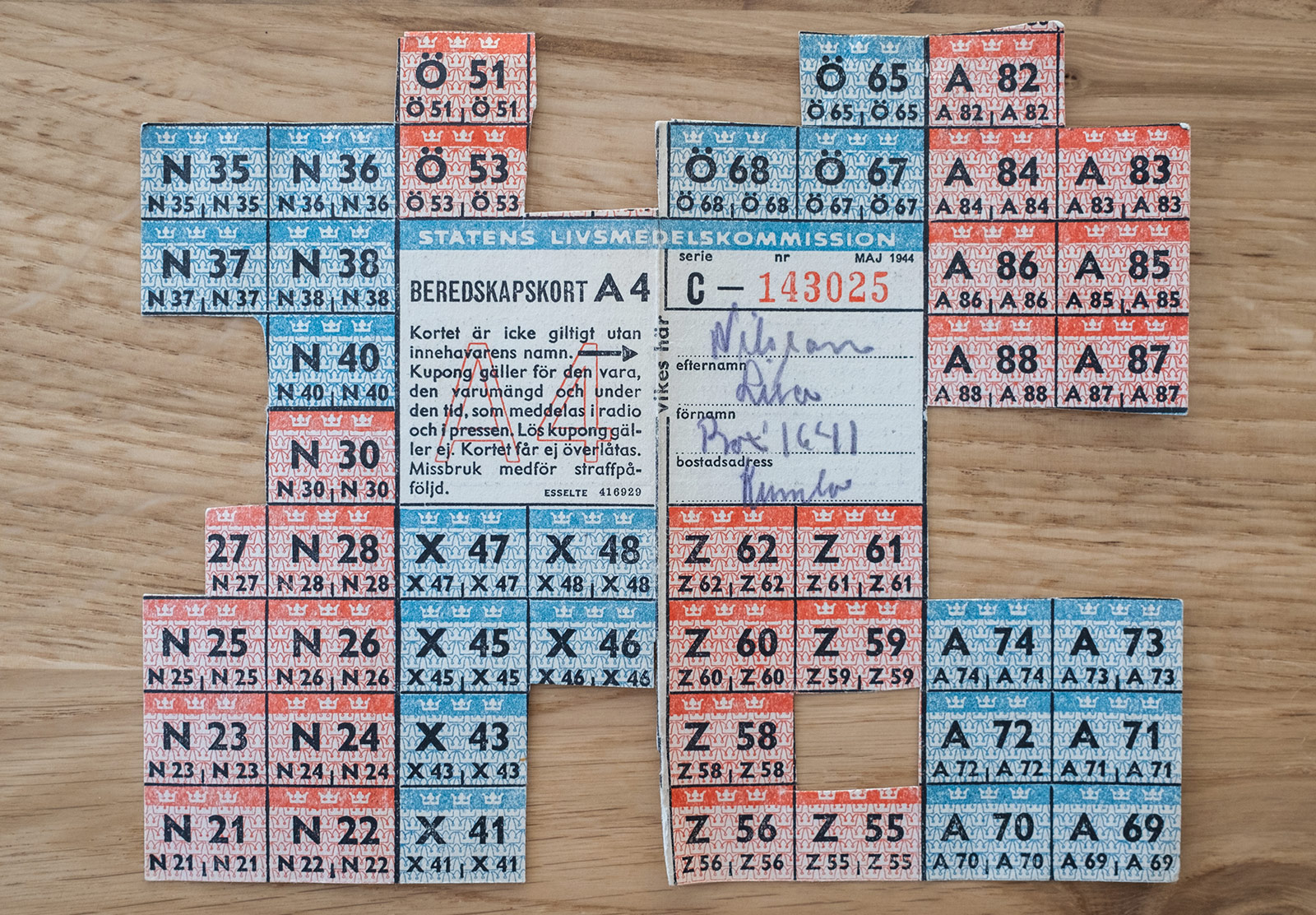
The ration cards not being squared off bothered me a bit — they would have been much easier to fold and store without the random strips poking out in all directions. However, the joke would have been on me because the card states that no loose coupons would be accepted. They were only valid if attached to the main card with a name and address (presumably to stop people abusing the system or stealing coupons).
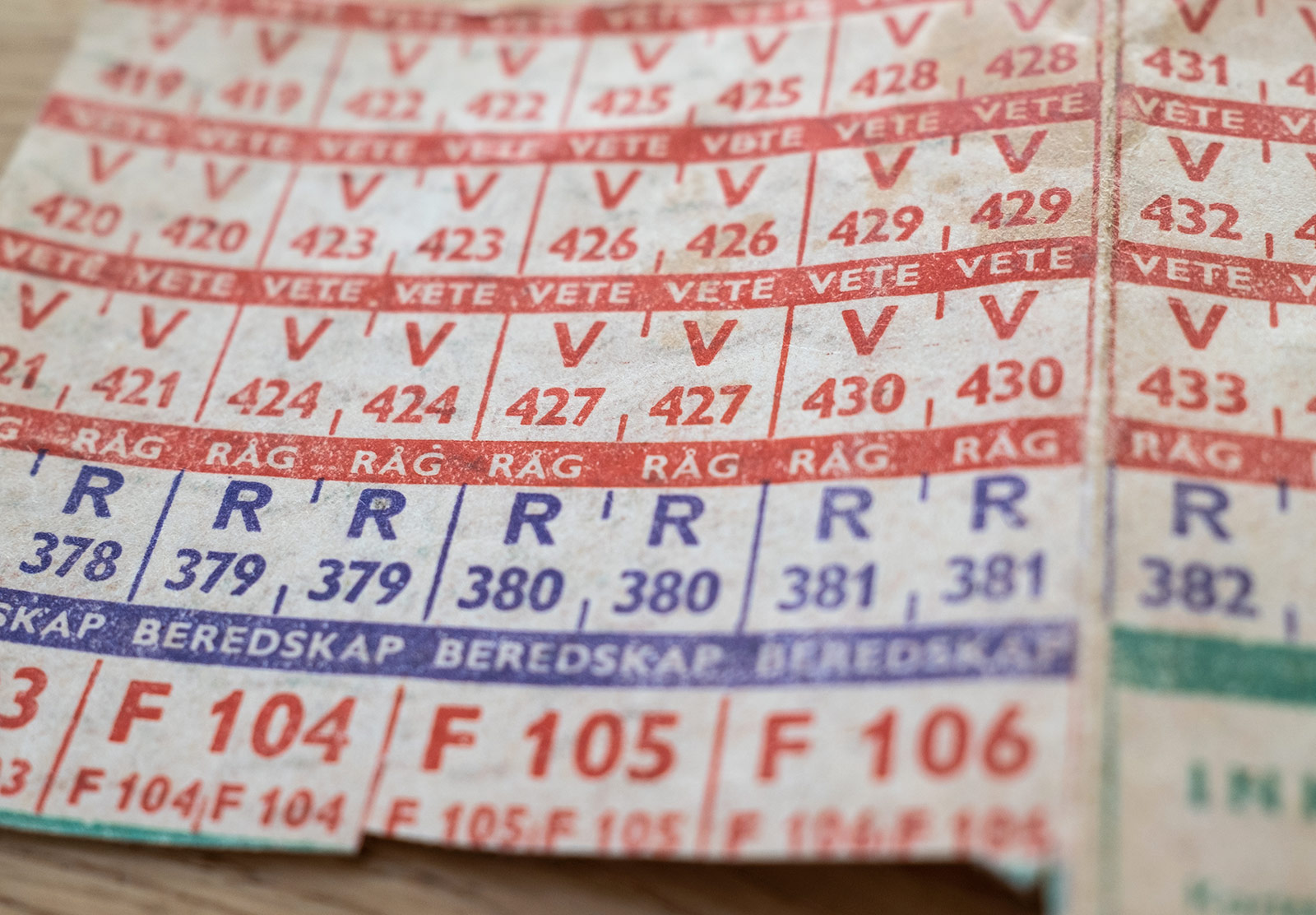
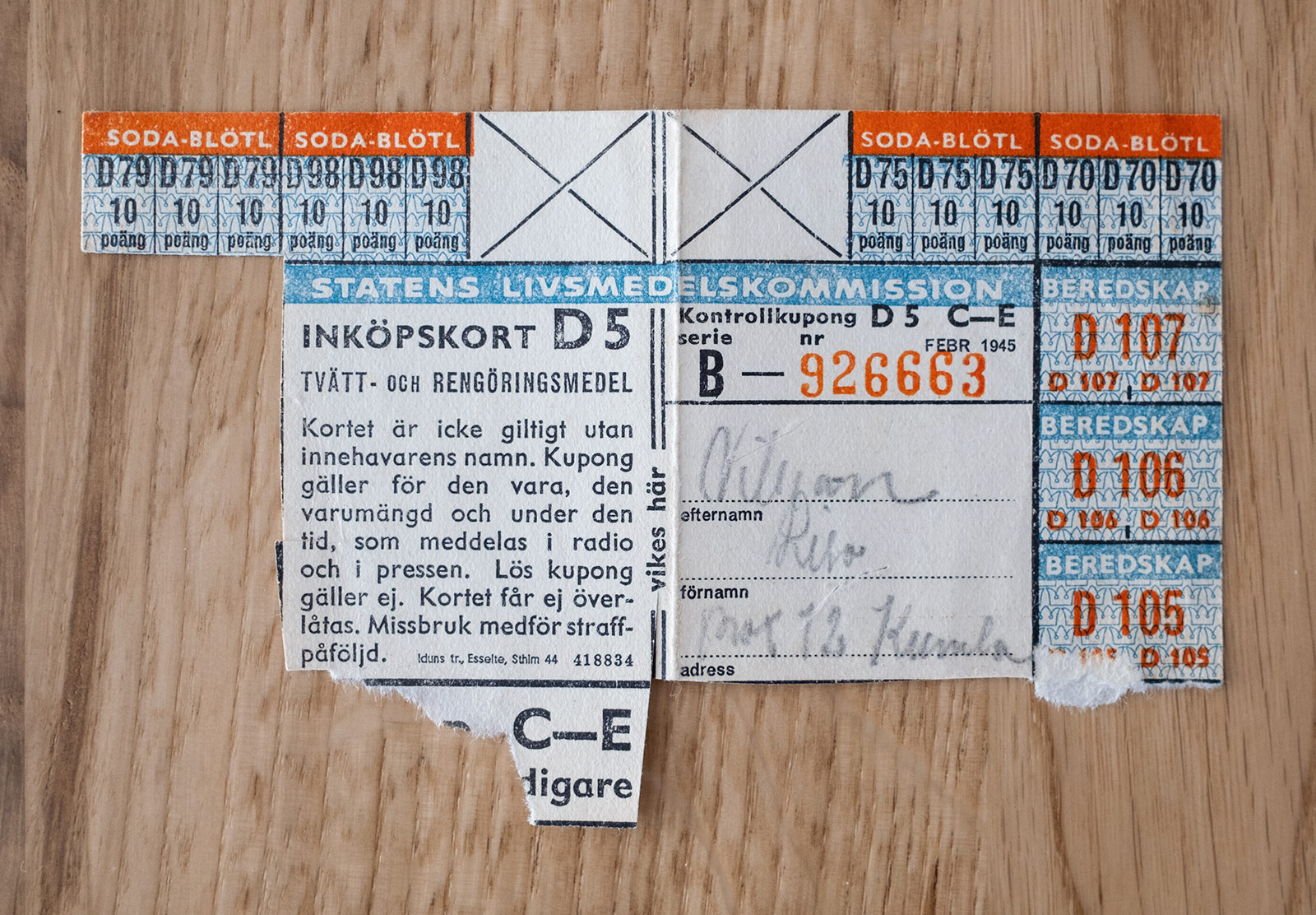
The number of unused coupons suprised me. Perhaps they were comforable enough to avoid a heavy reliance on rations. Kumla would have likely been a small place with farms closeby and I read that people in rural areas were able to trade spare goods for meat and eggs. Sweden also has an abundance of wild food options including berries, mushrooms and fish.
People wanted to avoid being labelled as Fru Hamsterlund; a term used for those who bought and stored everything they could. There were even poster campaigns discouraging this behaviour by creating a feeling of shame.
Crowns
The ration coupons are detailed with rows of tiny crowns. I think the design is based on the national emblem, The Three Crowns (Tre Kronor).
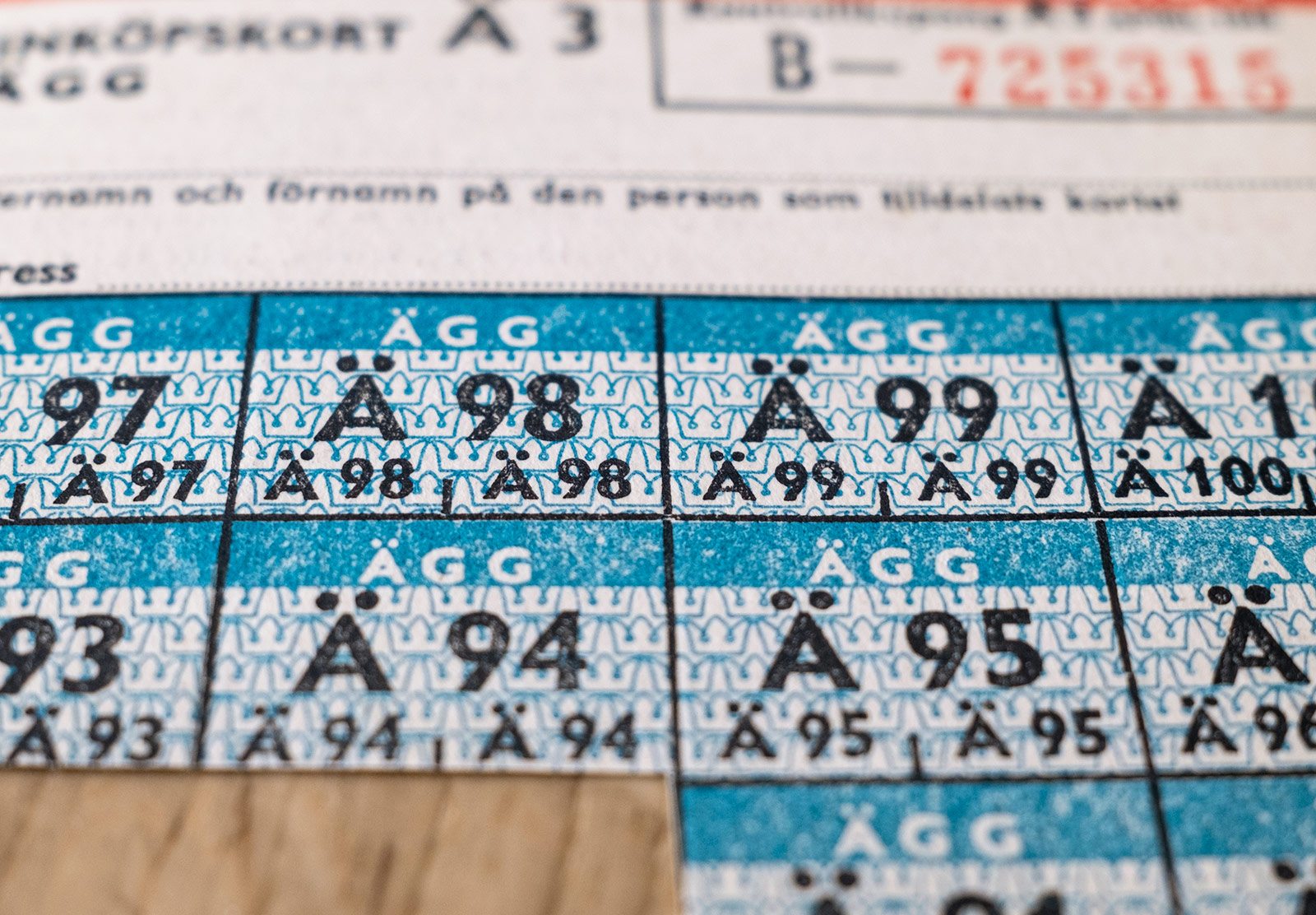
The shops
There are coupons for various shops in Kuma: W Johnson & Co, Laura Ruckmans, Frans Ericsson, C. A. Janssons Finbageri, Konsum Örebro (6 Köpmangatan), Sörgårdens Bageri and Birkmans Konditori. Two of the shops, Helanders Konditori and Lithells, look like they still exist today.


~ Swedish (on back of card):
Detta växlingskort som utlämnats mot två (2) halv-kuponger gällande för mjöl och bröd av alla slag, berättigar till inköp av samma varor som nämnda inköpskuponger. Varje ruta gäller sålunda t. ex. för 50 gram mjöl, skorpor eller käx eller 65 gram mjukt bröd av siktat mjöl eller 67.5 gram VR-bröd eller 70 gram mjukt bröd av sammalet rågmjöl eller 100 gram småbröd eller 80 gram pepparkakor eller 40 gram hårt bröd.
~ English translation:
This exchange card is issued against two (2) half-coupons valid for flour and bread of all kinds, entitles the purchase of the same goods as the purchase coupons. Each box thus applies e.g. for 50 grams of flour, crusts or biscuits or 65 grams of soft bread of sifted flour or 67.5 grams of VR bread or 70 grams of soft bread of total rye flour or 100 grams of small bread or 80 grams of gingerbread or 40 grams of hard bread.
The people
There are ration cards for five people:
- Sven Evert. Larsson
- Lisa Matilda Nilsson – who became Larsson ~1947
- Ester Nilsson
- Anita Nilsson
- Gösta Hansson
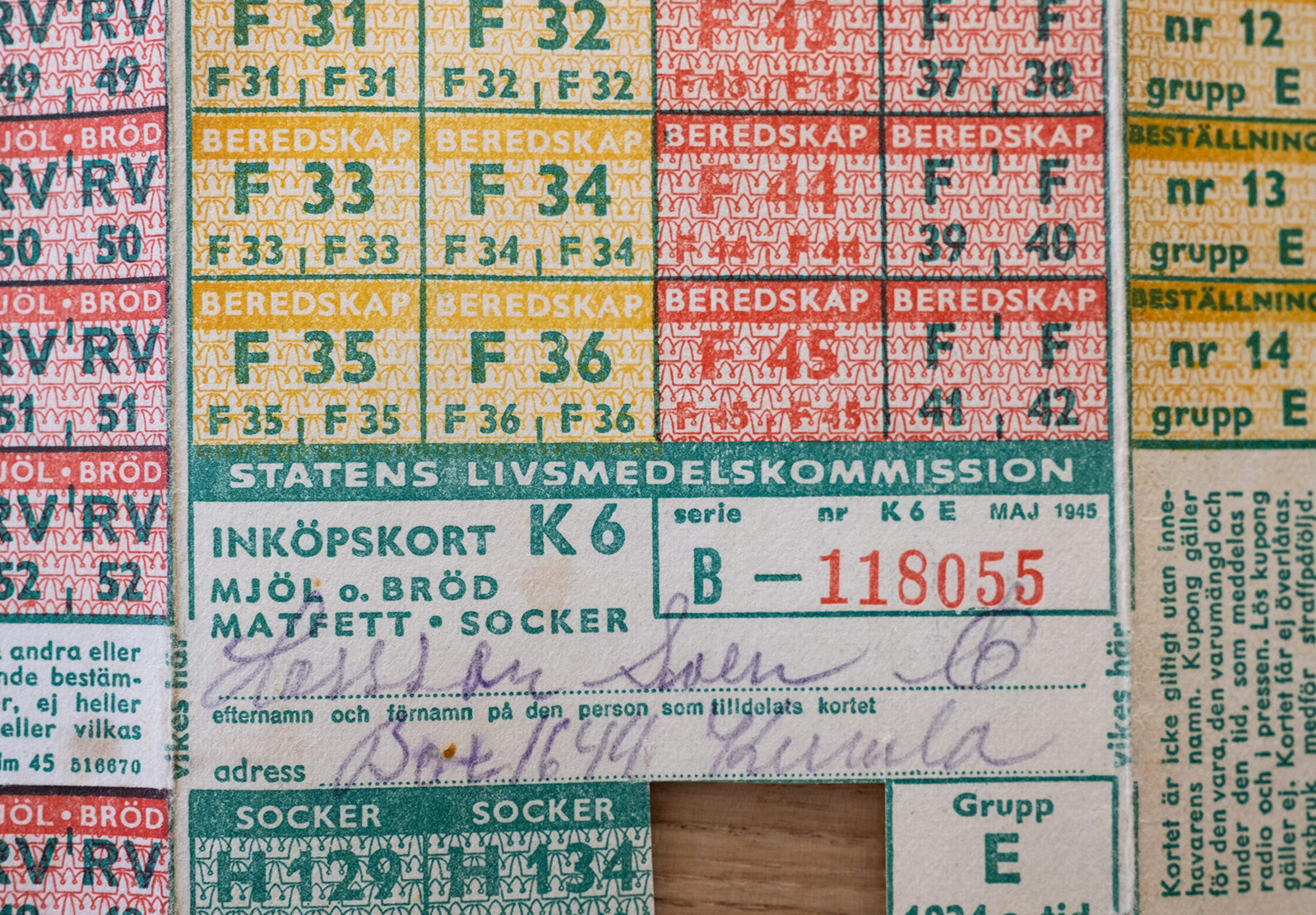
Most of the coupons belonged to Sven and Lisa, which leads me to believe they were the parents (with children called Anita and Ester). The ration cards state a name and address must be filled for the coupons to be valid, which is helpful for me because I can see where the family lived throughout the war:
- Logsjö, near Edsberg (close to Kumla) / 1941 for Lisa
- Box 1644, Kumla / 1942 for Sven
- Box 1641, Kumla / 1943- 1944 for Sven and Lisa
- Box 72, Kumla / 1944 – 1945 for Sven and Lisa
- Olaigatan 11, Örebro / 1945 for Sven
- Logsjö, near Edsberg (near Kumla) / 1945 for Gösta
- Packgatan 3, Örebro / 1946 – 1948 for Sven & Lisa
- Tegelgatan 7, Örebro / 1947 for Anita
- Hagagatan 6, Kumla / 1947 for Ester
- Trumpetaregatan 6B, Örebro / 1948 – 1949 for Sven
I have ration cards up to 1951 but no addresses for those. Gösta Hansson is the mystery man because there is only one ration card for him and his surname doesn’t match any of the others.
If you are reading and have any information about these ration coupons (particularly what the numbers mean), please leave a comment below 🙂

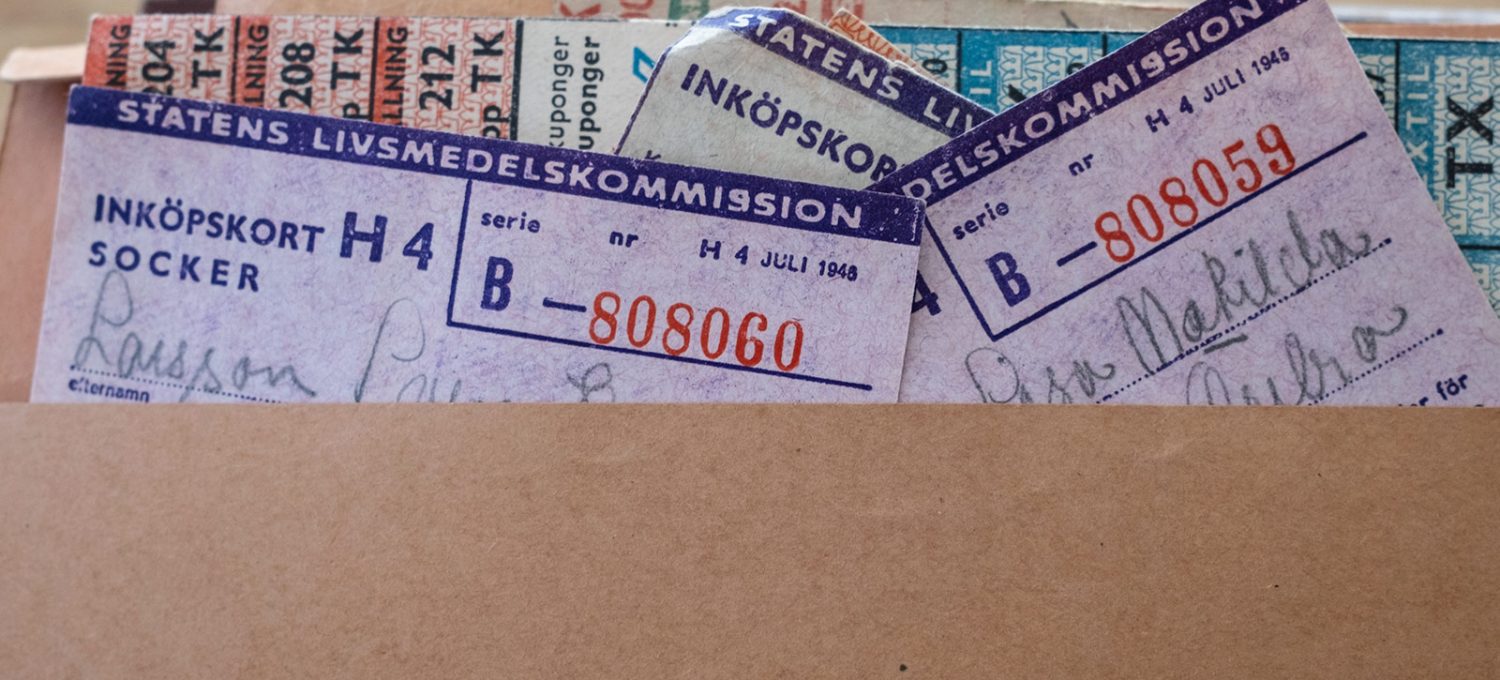
That’s wild that you are posting about this today. I just this week discovered my grandmother-in-law’s family’s WWII ration books. They were in a box of photos stored in a wall of my mother-in-law’s house. I was also surprised by how many coupons remained. They weren’t farmers, but they lived mostly off the land, gardening and hunting … which is why I assume they didn’t need all of theirs.
Oh what a coincidence! It’s interesting that people hung onto these things even though they were probably glad to see the back of rationing and the coupons were no longer needed. I’m glad your relatives had gardening and hunting to boost their food stash, it must have eased some of the pressure at the time.